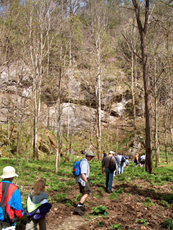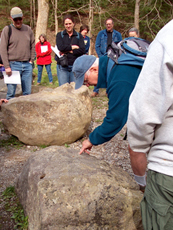EAST TENNESSEE GEOLOGICAL SOCIETY
| Whiteoak Sink/Tuckaleechee Cove and Vicinity - 2003 Spring Field Trip |
| Great Smoky Mountains National Park, Tennessee |
| Sunday, April 6, 2003 |
| Trip Leader: Dr. Don W. Byerly |

Beginning the day near the
Great Smoky Mountains Institute at Tremont,
Don Byerly orients ETGS members to the structural setting of the
field trip area.
Photos by Brad Stephenson, except where otherwise noted.
|
 |
| Don Byerly introduces the Metcalf Phyllite (Snowbird Group), the Thunderhead Sandstone (Great Smoky Group), and the Greenbriar Fault that has brought these rocks into contact with each other. | |
|
|
| ETGS members trek across the floor of Whiteoak Sink, a large karst valley formed where Cambro-Ordovician carbonates of the Knox Group have been exposed within the Tuckaleechee Cove window (beneath the Great Smoky thrust fault). | |
 |
 |
| Sinkholes and other karst features becon to curious explorers in Whiteoak Sink. | |
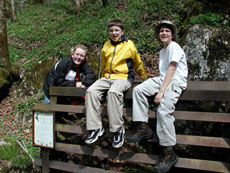 |
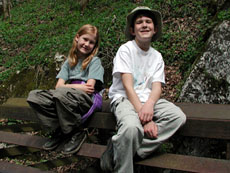 |
| Some junior geologists check out the gate installed to protect bats and other resources in a cave formed within the limestone. | |
 |
 |
| The Great Smoky thrust fault is visible as a horizontal feature behind the waterfall, where the stream falls off the Metcalf Phyllite or Cades Sandstone into a cave within the Knox Group limestone. | |
|
|
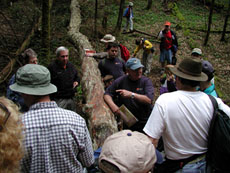 |
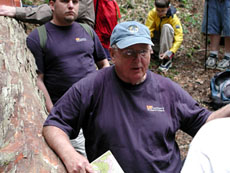 |
| Dr. Byerly and the group exchange ideas on the structural geology and geomorphology of Whiteoak Sink and the surrounding area. | |
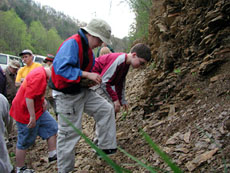 |
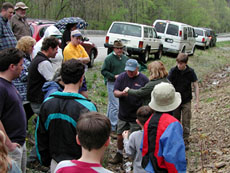 |
| Everyone enjoyed the search for "Herkimer diamonds" (doubly-terminated quartz crystals) in the Blockhouse Shale (Ordovician), just below the Great Smoky fault and the quartzite of the Cochran Formation (Chilhowee Group). Note that this location is outside the national park. Within the park, it is illegal to collect rocks and minerals without a permit. | |
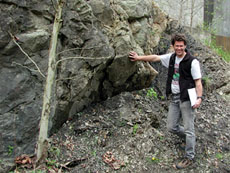 |
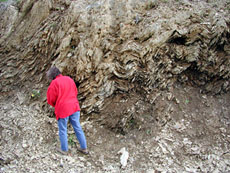 |
| The Great Smoky fault (left photo) and intensively folded/faulted Blockhouse Shale (right). | |
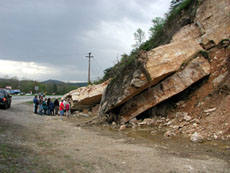 |
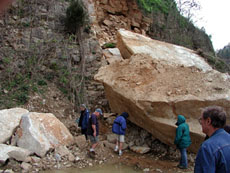 |
| Large blocks of the Nebo Sandstone (quartzite) of the Chilhowee Group have fallen adjacent to the highway, providing views of ichnofossils (trace fossils) of Scolithus linearis worm burrows. | |
ETGS thanks Shaw Environmental & Infrastructure, Inc. for sponsoring the reproduction of the guidebook for this field trip!
|
Page updated
May 19, 2018 |


